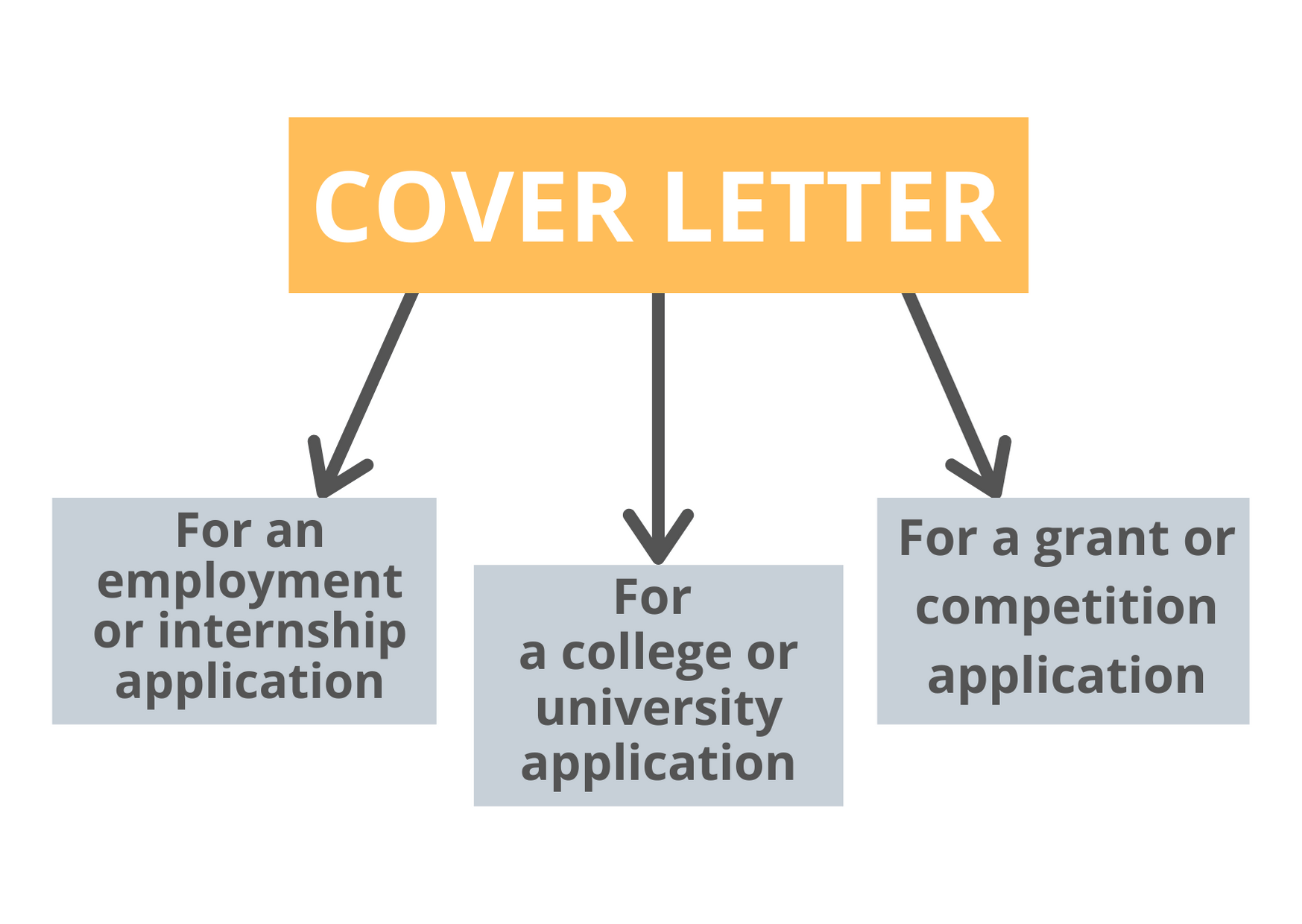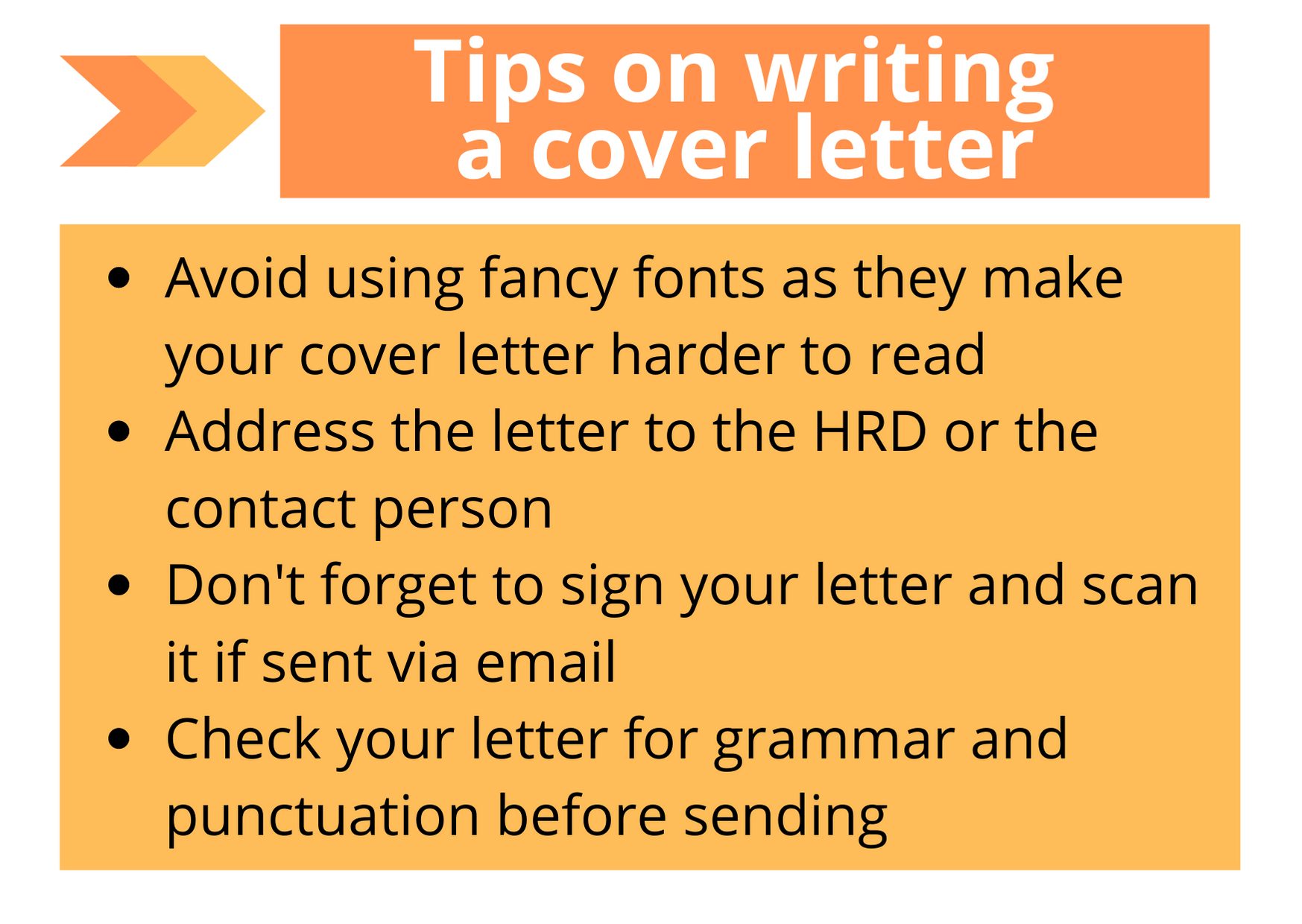How to Write a Cover Letter
Writing Guide
Throughout your college career, you are likely going to apply for many different types of academic programs. This will start with actually applying to a university or college itself. Then, over time, you may compete to be a part of the prestigious classes or graduate programs, or apply for grants to fund your research. Nearly all of these programs will be competitive, and it will be critical to distinguish yourself from other candidates. One of the most important but often overlooked parts of any academic application is the cover letter. A good one can often strengthen a candidate’s application and help make a case for his or her selection into prestigious academic programs. Let’s take a closer look at academic cover letters and discuss how to write a good one.
What Is It?
A cover letter is a short document that provides a quick summary of a larger packet of information. In the business world, people often use them as a synopsis for a resume or larger employment history packet when they are seeking a job. Cover letters are brief and to the point; normally, it will consist of just one page.

In academia, these documents may be used for several different reasons, including to:
- Introduce someone’s application to attend a college or university
- Accompany an application to attend a fellowship
- Support an application to win an internship at a company
- Strengthen a request to become a graduate or research assistant
- Summarize the key points of a grant proposal
This is just a small list of reasons why you will likely need to write a cover letter at some point during your academic career; there are also many other situations where this document is required. Finally, when you complete your academic studies, you will likely have to prepare a cover letter to accompany your resume when you apply for a job as well.
Purpose
In the days of email and electronic communication, why should you even bother including a cover letter with any sort of academic application packet? There are several different reasons. For starters, you may be required to include it for a given application. Additionally, an academic can help to convey the following information to the reader:
- Offer an introduction. A good cover letter will let reviewers of an academic application know exactly who you are before they even begin digging into the packet.
- Build Interest. It should make reviewers want to read through your entire packet as well.
- Call to Action. The information you convey in your cover letter should help to compel readers to select you for the academic program you are applying for.
- Demonstrate Writing Skills. Cover letters will give academic review committees their first glimpse of your capabilities to write and convey information, which could be an important factor in their selection criteria.
Academic cover letters may vary slightly, depending on the purpose and the intended audience. However, regardless of the differences, they all must include some basic characteristics in order to be effective. Here are the steps you should take to write one.
Writing Steps
Step 1: Gathering Information
Prior to starting your first cover letter, the first thing you should do is determine if there are any specific requirements it must meet. Standardizing formats and requiring candidates to present information in a certain way makes it easier for reviewers to assess multiple candidates in a short period of time. For example, the academic program you are applying to may require you to use a specific format. You may also have to include certain information in your cover letter, such as your current academic degrees or credentials. So, find out if there are any specific requirements for your letter before you begin to write it.
Once you’ve determined whether or not there are any requirements, you should start thinking about the information you are going to present in the letter itself. To do that, start with answering the following questions:
- What personal information do I want to convey about myself in the letter?
- What do you want to highlight?
- Why am I applying for this academic program?
- What is the call to action to get reviewers to select me?
Asking those questions and answering them honestly – and even writing down some notes as a result – will give you a great start to preparing an honest, effective cover letter.
Step 2. Formating
If the academic program you are applying to does not give you a specific format for a cover letter, you will have to make your own. A typical one will consist of the following sections:
- Return Address. For brevity and appearance sake, include your name and return address as a header centered at the top of the page of your document.
- Date. The first line of your cover letter should be the full date, justified to the left side of the page. Express the date formally without any abbreviations (i.e., December 1, 2019).
- Addressee Info. One space below the date, and also justified left, you should include all of the address information for the person or organization the letter is intended for. Include the same type of information here that you provided in the return address section. If the addressee is a person, ensure you spell the name correctly and get the person’s title right as well.
- Salutation. In a formal academic writing, the salutation line is normally two spaces below the addressee information and justified left. The salutation normally consists of “Dear” followed by the name of the person or institution being addressed and ends with a comma.
- The Body. Two spaces below the salutation line, you will begin the body of your letter. The body, which we will discuss in detail a bit later, is the key part of the letter that achieves its overall purpose. The body normally consists of a strong opening paragraph, two to three supporting paragraphs, and a strong closing paragraph that reinforces the ideas expressed earlier.
- Complimentary Close. Two spaces below the body and justified left, you will include a line to formally close out the letter. Formal cover letters typically close out using words like “sincerely,” “all the best,” or “respectfully” followed by a comma.
- Signature. Sign the letter by hand in ink below your complimentary closing line.
If you aren’t told otherwise, plan on using a common font, such as Calibri, Arial, or Times New Roman, in size 12. Your letter should be easy for reviewers to read. Do not attempt to significantly decrease the font in order to jam more information onto a single page; instead, if your letter is too long, be prepared to make a tough call and edit out some of the information.
Once you’ve created your basic template, you’ll be ready to outline the body paragraphs.
Step 3. Creating an Outline
You only have 4-5 paragraphs to work with, so you really need to make them count! One of the best ways to do that is to create a rough outline for each one, so you can ensure you capture all of the critical information you want to cover. While some writers do not like to work with outlines, it can be a helpful way to ensure you don’t miss anything. Outlines can often help you write faster, too.

In the case of a cover letter, a few simple notes to capture for each paragraph can often be enough to get you started. For example, in your opening paragraph, you may want to jot a few notes down about covering who you are and what you’re applying for. Your next paragraph may cover why you want to be selected for an academic program, followed by a paragraph that has a strong call to action for why the academic institution in question should select you. Your closing paragraph should summarize and reinforce everything you stated previously and bring the document to a satisfying close. Once you are satisfied with your outline, you will be ready to begin writing.
Step 4. Drafting
After you prepare your outline, writing the actual body should be straightforward. Finish the thoughts you introduced in your outline with complete sentences, forming paragraphs. If necessary, include effective transitions from one paragraph to the next, too. You should write in your own voice but ensure that the overall tone of the cover letter is formal. Once you complete the letter, review it one time for style, grammar, and errors and make any necessary adjustments. Then, if possible, set it aside for a day or two before you review it again.
If you stuck with your writing, ask a professional team to write a cover letter for you or edit the existing one.
Step 5. Completing Final Review
Giving yourself a clean break between writing and reviewing your piece will help ensure you look at it with a fresh set of eyes. Once you feel enough time has passed since you drafted the letter, read it through from beginning to end without stopping, even if you notice an error. If you are unsatisfied with the flow and style of the letter, make any necessary adjustments and check the cover letter again for grammar and spelling. Continue this process until you are satisfied with how the letter turned out.
If possible, you should also have someone you trust to review the letter as well. The second set of eyes may help you improve the letter and could spot errors that your tired eyes missed as well. Once your second reviewer has provided feedback, you can decide what additional revisions you want to make, and then check one last time for grammar and spelling.
Step Six. Signing and Submitting
Once the final review is complete, adjust the date to reflect the time of submission, print the cover letter, and sign it in ink. If your academic packet is being mailed or submitted on paper, you can add the letter to the larger packet. You can scan the signed letter and send it via email.
As you apply for competitive and highly sought-after academic programs, make sure you take the time to write an effective cover letter. It is often the first thing that academic review boards read when reviewing a packet; if you write a good one, it can help set a good first impression and complement the rest of your application. So, take the advice and tips offered here into consideration, and you’ll be on your way to writing effective cover letters throughout your academic career.

